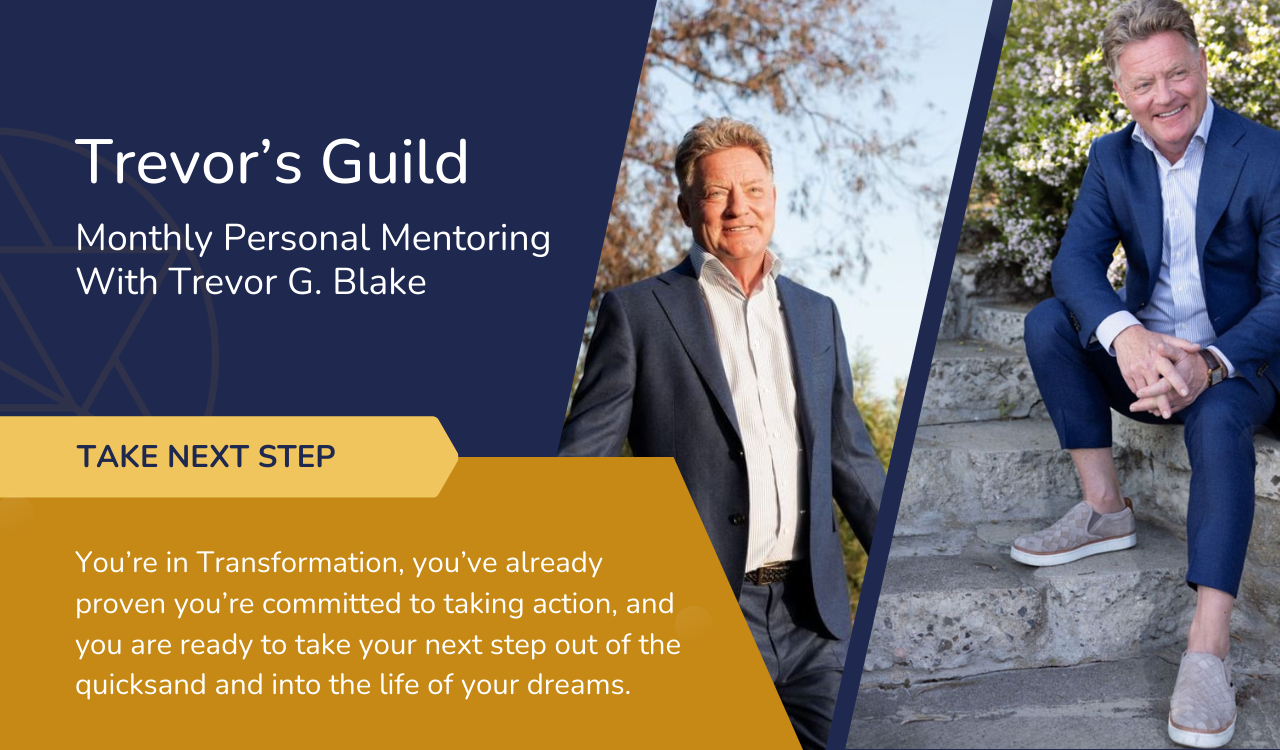The Business Plan Process
“Where a calculator on the ENIAC is equipped with 18,000 vacuum tubes and weighs 30 tons, computers of the future may have only 1,000 vacuum tubes and perhaps weigh one and a half tons.” – Popular Mechanics, 1949
A Business Plan Focuses on Customers and the Market
Peter Cohan, a successful investor and author, once stated, “I started investing in startups in 1996 and have seen plenty of business plans. I have invested in six startups and three of those were sold for a total of $2 billion. The other three went out of business, and even in that tiny sample, there is typically one connection between these – successful business plans. Simply put, the successful business plans contained deep insights into the prospective customers. And the ones that failed, did not.”
That is the best and most concise definition for a business plan that I’ve ever read. A business plan describes prospective customers and the market potential, and is written first and foremost as a blueprint for the business owner’s personal benefit.

So many entrepreneurs fall into the trap of thinking that a business plan is an MBA-type thesis designed to impress investors. Treating the business plan as a way to explain their winning idea. It’s the opposite.
Instead, after investigating, who needs what you’ve created? What problem does it solves that can’t be solved without it? How you will get the attention of customers and convince them to buy? How does your product or service fit in the current marketplace? How will the company be structured to survive financially, until your winning idea is a runaway success?
To get all this information, you need to talk to people. Writing a business plan requires surveying potential customers, particularly those who’ve recently used similar products or services within the market you will be joining. You want to learn what they like and don’t like, what they value, and what improvements they’d like to see. Customers have given me some of the best ideas for product improvements and marketing campaigns. It also means investigating the competition and evaluating what others do well and do badly. This will help you figure out how to distinguish yourself from what already exists.
Yes, social networks and various web-based analytical tools can provide basic data for customer profiling, but, they rarely provide the deeper insights you need. Your prospective customer is not a set of digital fingerprints. Your customer is a real person, with real feelings and opinions. When researching prospective customers, your goal is not just to understand the statistical profile of a group. Additionally, you need to appreciate the subtle nuances of individual buyers and their thought processes.
What I find disconcerting is that, given all the advice available about this topic, hardly anyone recommends getting away from your desk and actually speaking to people. Many times, I’ve listened to a business-plan presentation only to learn the entrepreneur hasn’t even bothered to discuss anything with potential customers, distributors, or manufacturers. Most entrepreneurs think that they can understand their customers without actually meeting any in person. These same entrepreneurs are often unable to answer even the simplest questions with confidence. It shouldn’t be a revolutionary idea, but it almost is: As you research prospective customers, meet and greet real living-and-breathing human beings.

What people say may surprise you.
What you learn can provide crucial insights, shortcuts, strategies, and inspiration that allow you to adapt and take advantage of constantly changing conditions in the marketplace. Ultimately, this reflects one of the “secrets” to success: Successful entrepreneurs adapt to the state of the market and the needs of customers. The ability to adapt and make effective decisions depends on the depth of your knowledge and understanding.
Regardless of the business, every entrepreneur needs to know: who their customers are, what their customers need to have fixed and, how much their customers are willing to pay for a solution. Additionally, every entrepreneur needs to know: the potential competition, what they charge, what they do well or poorly and, how to keep one step ahead of them.
The process of building a plan requires a detective-like mentality. Searching for competition, new inventions that may be a threat and, new markets you might otherwise have missed. Conducting customer research leads to a higher appreciation of their needs, which can help you fine tune your product or service to stay one step ahead of the competition. The more closely you can align what you have to what the customer needs, the more likely you are to gain loyal customers. It sounds obvious when written down and read, but so many companies lose touch with their customer base almost as soon as they start.
Psychologists are keen to point out that there are three perceptions. The way you see yourself, the way you think others see you, and the way others actually see you. Although they are usually referring to personal development, the same views apply to your business. How you see your business might wildly differ from the way customers view it. If you are already in business, when did you last stop to check what your customers actually think of your company?
Go to the Places Where Your Potential Customers Shop
When I am in the process of turning an idea into a company, I find the business-plan process the most exciting part of the start-up phase. To engage with potential customers I usually go where I know they gather in large numbers. Typically, that will be at a major exhibit or convention where lots of my potential competition will also be, showcasing their products or services.
It could just as easily be in a shopping mall or market. Of course, I could reach thousands online, but social media or telephone surveys only get superficial feedback.
One must see the whites of the customer’s eyes.

Occasionally, I have rented a small exhibit space at a relevant trade show and conducted a market research survey with attendees.
People love to talk about themselves and answer survey questions, especially if offered free coffee and a donut in return. What I learn in these events often takes my business idea in different directions than I would otherwise have envisaged.

This sounds “old-school,” but is an essential back up to the kind of information you can gather through specific online networking. There simply is no substitute for free-flowing conversation between an entrepreneur and a prospective customer.
Business Plan Structure
If you go to business school or search online for free advice about business plans, you’ll learn the typical business plan has about seven sections.
Executive summary, basic company overview, management details, industry statistics, marketing plan, amount of finance needed, and financial projections.
If you want your business plan to end up in the trash-can of every investor you send it to, go ahead and structure it that way. Some advice upfront – avoid any and all MBA-speak like “actionable,” “traction,” “granular,” and “deliverables.” They make most investors nauseous, keep to plain English.

For your business plan to have meaning to you or anyone else, it must contain real market feedback from potential customers, vendors, or competitors. You need to have frank and detailed discussions with product designers and manufacturers. Discuss your financial plan and forecasts with an experienced accountant, this way you’ll have a full grasp of the business you think you are in.
You cannot build an effective plan sitting in a classroom listening to an expert tell you what it should contain. Nor can you produce anything of value while sitting at a computer. Above all, you must avoid paying a third party to produce a plan for you. That would be suicidal for success. There is one imperative, you must get out and speak with as many stakeholders as possible.
Start in the Middle
For many entrepreneurs, just getting started is what causes procrastination. An easy trick is to start in the middle and not at the beginning.
Funny enough, this was also one of the best pieces of general writing advice I ever received. Rather than writing a piece from the beginning, write the middle. Then, write anything you find fun or interesting and expand outwards from there. Just capturing a narrative or anecdote allows the creative juices to flow and expand around that core story. The advice works for anything.
I do the same with business-plans. Marketing interests me, so I usually start there, which leads to thoughts about packaging and manufacturing and off I go.
The same advice is offered to any entrepreneur who finds the business-plan process daunting. Don’t try to produce a perfect document that follows the standard format you find on any website. The business-plan is a process for you to get to know your market and prospective customers, so start wherever you feel most comfortable. Once you start, the rest will come easily.
Nine Sections of a Typical Business Plan That Can Help YOU Grasp Your Business
Here is a list of nine sections that typically appear in most business plans. Most of these are topics or issues that all plans should include, also, that any entrepreneur should be thinking about before they form the business strategy. You can use this list as the way to organize your investigative research, you can merge topics, re-title sections, or reorder them in whatever way is appropriate for your business. In the next section, I describe in detail what each clause should contain. Keep in mind it’s not about completing the section for the sake of it, it’s about understanding the real world’s perspective of your idea or company on that topic. There are plenty of example business plans to be found online to help you get started. Some of them, however, are very generic and more about promoting you as the entrepreneur than the market opportunity.
An alternative guide to help you understand what information is relevant to stakeholders is a public company S.E.C. annual filing. You can find these on any publicly traded company website and are usually under the shareholder, investor, or financial tabs. The annual SEC filing is really a detailed business plan addressed to the SEC and shareholders together, they can be an excellent guide as to the type of content people care about. It doesn’t matter that the company is a multi million-dollar enterprise. The only difference between you and them is the size of the numbers.
Another good source of information for overall market statistics, competition, product sales, demographics, and coming innovations are the annual market & research reports. They’re produced for just about every market. They can cost thousands of dollars, mainly because lazy middle managers buy them in bulk and plagiarize the contents to impress their sales and marketing bosses. I know because that’s what I used to do. Fortunately, most senior management don’t know they exist. It’s possible, with a little creative search, to find whole sections available for free as well as some of those impressive presentations that summarize the markets.
1. Executive summary: a short synopsis of the entire plan that answers the question ‘Why should I care?’ It is described in more detail later in this chapter.
2. Business description: Market Potential (broad numbers) based on referenced research and customer feedback, then describes the type of business, the product or service, and the critical need it fills better than any other product or service currently available. Why customers will be delighted and how quickly the investor will get return on the investment.
3. Marketing: describes potential customers, competition, and how you will promote and market, potential customer feedback (help me build it and they will come) pricing plans, packaging, sales and marketing process.
4. Manufacturing and Distribution: describes the infrastructure for actually producing what you will sell including back up vendors and budgets and growth forecasts for 3 years supplies
5. Organization: describes the organization of the company Keep it short. Key opinion leader support, advisors if you need them (I never have advisors or boards but your industry may require them), business model diagram, chosen vendors, consultants ready to jump on board etc.
6. Critical risks: describes any significant challenges or obstacles and how they will be met such as competitor response to your market entry, challenges of organic expansion, inflation and rising manufacturing costs over time. Patentability and barriers to new competition.
7. Financial: provides estimates of expenses, revenue, cash-flow and profits, with particular attention to cash flow challenges (see later chapter)
8. Milestone schedule: describes the planned schedule and any significant deadlines for a three-year growth period
9. Appendix: as necessary, provides any supporting documents

Section by Section: The Business Plan in Detail
Below are detailed descriptions of what each section of a business plan can or might contain. As I say, how you write this is up to you, ideally the plan will cover all topics and answer all questions that are relevant for your business.
Use the lists of questions below as a guide for what to address. Successful entrepreneurs should be able to answer all of them fully if asked by a potential investor in a fund-raising meeting. All while supporting the answers with actual stakeholder feedback.
When you feel you’re finished, the litmus test for determining the effectiveness of your business plan is to share it with others. Including the stakeholders you’ve interviewed or other knowledgeable people in the industry. Ask for opinions on your proposed marketing plans. Ask potential customers if you have accurately identified their needs and matched them to the real benefits of your product. Then revise the plan as necessary to clarify, improve, and finalize it.
1. Executive Summary and Elevator Pitch
When your goal is to attract business partners — such as investors or vendors — you need to create one succinct description of your business that will be used in two ways. One is the single-page executive summary that gets sent to potential investors, the other is the verbal and shorter version known as the elevator pitch that you use to respond to people when they say, “I heard you have a great idea for a business, what is it?’ While your business plan’s executive summary overviews all the key points of the plan, you also want to distill this even further into a five-minute verbal pitch with a catchy tag-line intended to ‘hook’ the person who asked the question. For example, on my website you’ll find the catchy tag-line Where transformation and financial independence meet. If anyone asks me about my concept for courses and books that is it in a nutshell. It’s about where transformation and financial independence meet; if you’d like more details I’d be happy to send you the course summaries. What is your best email address to use? Done, next floor please.
The concept for an elevator pitch is to imagine stepping into an elevator at the same time as a woman with a million dollars in her pocket, but she doesn’t know where to invest it. To sell her your idea, all you get is the time it takes for the elevator to reach her destination. In vivid, passionate terms, you want to encapsulate your winning idea, why it’s sure to succeed, and what the investor will get out of it (or the return on their investment). This is no easy thing to do, and it requires much practice. In reality, though, you do not get 5 minutes, more like 30 seconds.
As for the executive summary, budding entrepreneurs sometimes make the same mistake of many job seekers when they send me unsolicited resumes that are pages long. I’m busy, and without a compelling reason to consider them, I’m not going to spend the time to review their entire work history. Further, the more detailed information I read, the more opportunity I have to make unchallenged judgments and find reasons to disqualify them as a candidate. A good resume highlights the most relevant qualifications, providing just enough information to intrigue me and make me want to call the candidate to learn more.
The executive summary is a one-page overview of the key data you discovered by going through the lengthy business plan process. If you did the process well, the one-pager will all but write itself. Everything included here should be explained or supported in more detail elsewhere in the plan. Here are the main topics and questions to include:
What is the $ size of the overall market?
In your business plan process you should have researched market reports. These days there are annual summaries of just about every market, which includes not just overall size but individual product sales.
What is your niche?
What need has been expressed by customers that you will satisfy?
What is the market potential? (If this is for investors, only big numbers should be used.)
Who are the customers and what will constitute a sense of delight?
How does it differentiate from other similar companies?
How much capital will be required and how should it be phased into the company such as matched to milestones and growth?
How will the capital be used?
What is the return on the investment? (to your savings and/or outside funding)
Why is the venture a good risk?
There are lots of examples online. Just use your browser to search, ‘brilliant executive summaries.’ There is no one perfect style. What will make or break yours is how well you know your market. That can only be gained by actually going through the business plan process.
2. Business Description
In this section, describe the winning idea fully. Describe the type of business and the specific product or service. Describe the need it fulfills, and what makes it unique or different than the competition. Speculate on the growth potential, such as new products, markets, customers.
What type of business are you planning? How do your customers perceive this business today? What are they unhappy about and what is the problem you intend to fix?
What products or services will you sell? What benefit does the customer gain? What gives you the confidence to know you delight them? (feedback from real people)
What type of opportunity is it? In China, they sometimes classify business ideas as ‘me too,’ ‘me better,’ or ‘me first.’ I really like that classification.
Why does it promise to succeed?
What is the growth potential?
In what ways is it unique?
How does it compare to others?
3. Marketing
Who are your potential customers? Can they be segmented into sub-groups or niches? For instance, all humans drink, some drink sodas, some of them drink diet sodas, and some of them only drink sugar-free. These are all segments. How much do you know about them? Share customer feedback.
Do you have pre-orders?
Who are your competitors? How are their businesses positioned? What did they do well?
What market share do you anticipate by year 1,2 and, 3 based on the response you received from your customer conversations? How quickly will they be willing to adopt your service or product and abandon their old one? What tactics will ensure rapid adoption?
How will you price your product or service? What did customers say about that? What pricing model will you use, such as freemium? (free for a period to try it out then a subscription) How will you ensure payment and quick payments?
What advertising and promotional strategies will you use to generate leads and sales? Why have you chosen them? How have you tested potential effectiveness?
How will you get people aboard early?
How will you get repeat business?
Sales tactics.
4. Manufacturing and Distribution
Who will make the product? What is the cost? Or, who will provide the service and at what price? Describe the manufacturer or service provider and its history of business as well as its current financial standing. Describe back up providers in case your main one goes out of business.
Who will ship the product and at what costs?
What steps are required to produce your product or service?
If you plan to manufacture yourself, who will be your suppliers? Costs, vendor stability and experience?
Availability of labor and materials.
5. Organization
Who will manage the business?
Who is the CEO? What experience do they have?
How will you structure your organization? Why? (E.g. – Hub model using selected vendors with comparable costs to building the functions yourself.)
What consultants and specialists will you need? How will you use them?
What legal form of ownership will you choose? Why?
What licenses and permits will you need?
What facilities are essential?
Board members and advisors. What value do they bring?
6. Critical Risks
There is no such thing as a risk-free business. In particular, anticipate financial issues that relate to cash flow (see later) and raising sufficient capital.
Future competition. What do you know about technology innovation in the pipeline? How are you different? Can you establish barriers to entry such as complication of manufacturing or patent protection?
7. Financial
No investor will believe you can get this right, but, they want to see you’ve made a deep analysis and considered cash flow. This section is basically a spreadsheet that attempts to capture all expenses and anticipated revenue growth over 3 years. It is always a guessing game.
What is your total estimated business income for the first year? Monthly for the first year? Quarterly for the second and third years?
What are the full expenses of the business by week and month for the first 12 months?
What is the anticipated revenue flow over time?
What will it cost you to start the business?
How will you cover personal financial needs?
What sales volume will you need in order to make a profit the first three years?
8. Milestone Schedule
Some businesses, like research and development, are dependent on reaching milestones before they can be sold. What are the milestones and when do you anticipate reaching them?
9. Appendix
Include all important documents such as incorporation certificate, articles of incorporation, drawings of prototypes, diagrams of business model, agreements with vendors, stakeholder feedback from interviews and surveys, management team and advisory board resume summaries.
Every Business Plan Is a Work in Progress
Once you finish your business plan, the most important thing to remember is, businesses never go according to plan. It’s about adaptation and figuring things out after starting.
Here is a perfect example:
In the spring of 1891, twenty-nine-year-old William Wrigley Jr. moved from Philadelphia to Chicago and — with only thirty-two dollars to his name — started a new business selling Wrigley’s Scouring Soap. This made sense, as Wrigley’s father was a soap manufacturer, but demand was slow. To encourage merchants to stock the Wrigley brand, he offered free baking powder with every purchase. To his surprise, the incentive was more popular than the soap. So, he changed his plan and began selling baking powder instead. Because incentives had worked so well before, Wrigley made an offer to every customer of two packets of chewing gum with each can of baking powder. It wasn’t long before the gum became more popular than the baking powder, and Wrigley adapted his business again. In 1893, he started selling his own brand of chewing gum and in several flavor choices.

This is a great story. Chewing gum was probably the furthermost thing from Wrigley’s mind when he started his business, but it was the product that made him a success. Though Wrigley lived in an era when things changed more slowly than they do today, he still adapted three times in three years and mostly followed his intuition. Today, entrepreneurs must adapt much faster, but the lesson remains the same. As soon as they open their doors, most businesses have to adapt to the reality of the market and adjust their plans to survive.
In other words, the business plan is not a one-off. It’s a process, a constant work in progress, and I recommend reviewing and updating your plan annually. The Harvard Business Review magazine regularly makes the point that to survive long enough to hit a home run, a company must reinvent itself periodically, jumping from the flattening end of one business performance curve to the rising slope of another.
Very few companies make the leap successfully when the time comes. That’s because they start the reinvention process too late. Once existing business begins to stall and revenue growth drops significantly, a company has less than a 10 percent chance of ever fully recovering. Thus, it’s important to continually track the market and competition, to review how well you are serving your customers, and to plant the seeds for new businesses before revenues from existing ones begin to stall. This is how companies enjoy sustained high performance.
After completing the process each year, it is also a good idea to use the executive summary to hold annual reviews with all your vendors, suppliers, and manufacturers. The attitude you want to create is one of teamwork by seeking continuous improvement from those you rely on for services. Share your success with them and thank them for being part of it.
Resources
In this startup entrepreneur gathering, we discuss working with investors and the need for business plans. (The first ten minutes is housekeeping, you can always forward that.)


